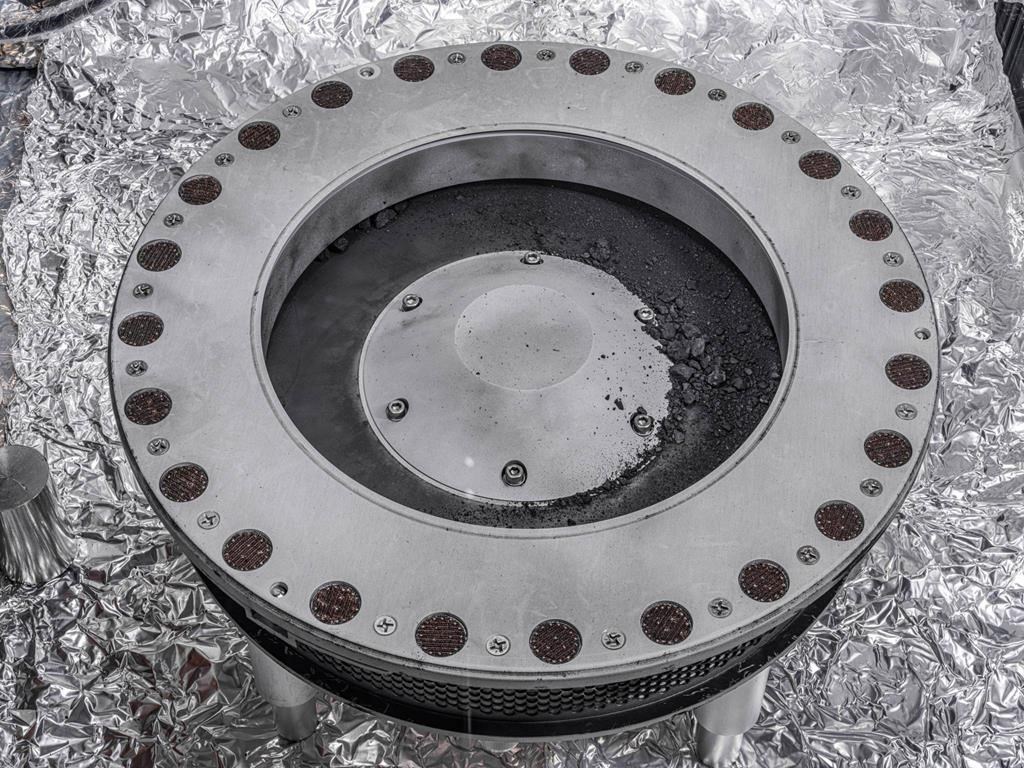MONTREAL – NASA analyzes presented Wednesday show that pieces taken from Bennu contain water and carbon necessary for life. Samples of this asteroid will soon be transported to Longueuil, Quebec, in the hope of better understanding the composition of the solar system.
Seven years after the launch of the OSIRIS-REx mission, in which Canada is participating, NASA provided samples from the asteroid Bennu, which is about 4.6 billion years old, and which was returned to Earth two weeks ago.
Preliminary analyzes show that these samples contain water and carbon, but they could also contain organic compounds such as sugars or amino acids. These basic units of proteins and DNA are essential for all life on Earth.
“Who are we? Where did we come from? What is our place in this immensity we call the universe? This mission will allow our scientists to study the formation of our planet for generations,” NASA Administrator Bill Nelson said during a press conference held Wednesday in Houston.
To understand who we are, we must examine the composition of the basic building blocks of life, he summarized.
Canadian contribution
In the coming weeks, when CSA finishes building a new clean room at its headquarters in Longueuil, pieces of Bennu will be flown into the country.
Caroline Emmanuelle Morissette, ASC geologist, will be responsible for preserving these samples.
Bennu is particularly interesting because it has remained virtually unchanged since the formation of the solar system 4.6 billion years ago, she told The Canadian Press.
The scientist explained: “The samples are kept in closed containers under nitrogen, to protect them from interactions with the atmosphere.”
“So they are not contaminated, unlike meteorites that might resemble Bennu, but they have passed through the atmosphere and so could be contaminating Earth.”
The purity of the sample from this asteroid is what makes this mission a turning point in space exploration.
Canada receives 4% of the sample, or between 4 and 10 grams, according to estimates by Caroline Emmanuel Morissette.
The Canadian scientific community will have access to asteroid fragments in the space agency’s laboratories because Canada has invested $61 million in the mission.
The laser mapping system, built by the Canadian Space Agency, was integrated into the spacecraft for the OSIRIS-Rex mission.
The maximum laser canadian, which ports the name of the OLA (OSIRIS-REx Laser Altimeter), has permission to prepare the three-dimensional cards from Bennu until it is equipped with a charger for the mission to select a site for the implementation. a sample.

“Hardcore beer fanatic. Falls down a lot. Professional coffee fan. Music ninja.”






More Stories
SALES / PHOTO SALES – Nikon D850 “5 Star” Bare Body Photo Body at €2,539.00
Discovering a new turning point under the Antarctic ice sheet! What are the consequences?
Record number for an insect!